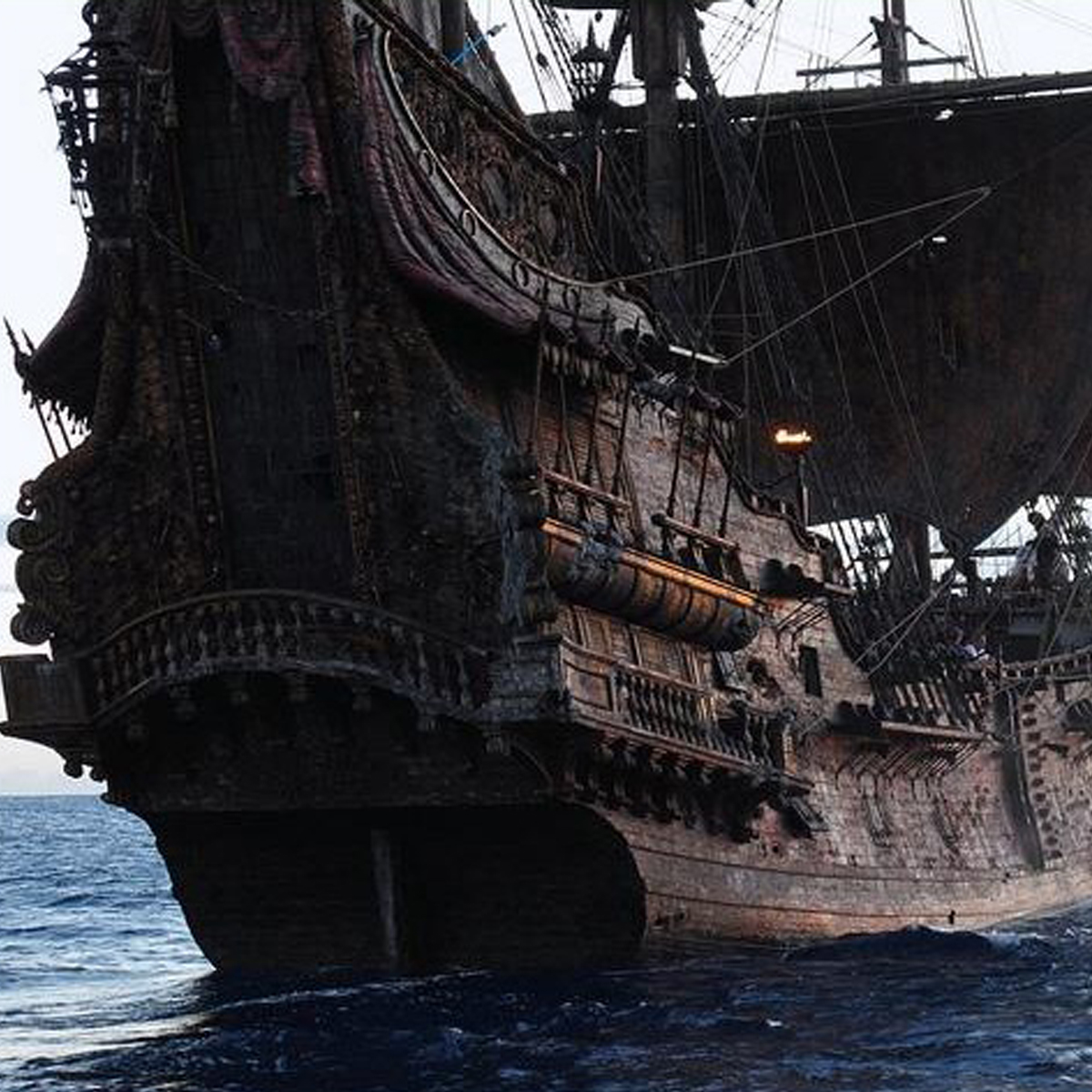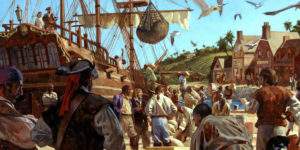The Queen Anne’s Revenge was the ship of the notorious pirate known as Blackbeard. It was built in England in 1710 as a slaver. She was large and well-armed, but many of his peers and crew would have preferred a faster, smaller craft. the remains of the ship have been discovered off the Coast of North Carolina.
Today the wooden 103 foot ship has rotted away after hundreds of years under the sea. In her day, she was quite majestic. Her carrying capacity was more than 200 tons of cargo and she was equipped with 20 cannons. The crew consisted of approximately 125 men. After Blackbeard was captured and beheaded, the rest of his crew surrendered. Like other ships of the time, the Queen Anne’s revenge carried multiple anchors made of iron, each over six feet long and weighing 3,000 pounds! The anchors were vital to a ships survival in rough seas and storms.
Tens of thousands of items were recovered from the wreck including pewter flatware, and armaments thought to be from the Captain’s quarters. The Captain’s cabin was the domain of Blackbeard. It was located at the front of the ship and secured by impenetrable doors and iron locks to protect the captain in case of a mutiny.
Supplies were store below deck, with heavier items like water barrel stored mid-ship to act as additional ballast. The only source of protein other than the fresh fish they caught during the voyage were dried and salt cured meats similar to beef jerky. Fresh fruit and vegetables were highly cherished, and the lack of them often compromised the health of the crew. Dry staples like rice and beans made were a staple of the pirates diet. The crew slept in cramped quarters below deck that were often rat and lice infested.
Poor diet, sunburn, fatigue and unsanitary conditions wreaked havoc on the health of the crew on long voyages. Many suffered and eventually succumbed to disease like malaria, dysentery and scurvy. The intolerable conditions were well known, so successfully acquiring a crew was a difficult task.
Captains often capitalized on and solicited men who were homeless, derelict or alcoholic. The men were coerced into service with a promise of a daily ration of rum and a share in the plunder. There was a system of Democracy on the ships. Loyalty was rewarded with offshore excursions at port cities with access to prostitutes and fresh food. Crew members accused of stealing or instigating fights were subject to a punishment agreed upon by the group. Troublemakers were often abandoned on deserted islands or killed and thrown overboard.
It was a really undesirable life that has been largely romanticized in modern literature.



